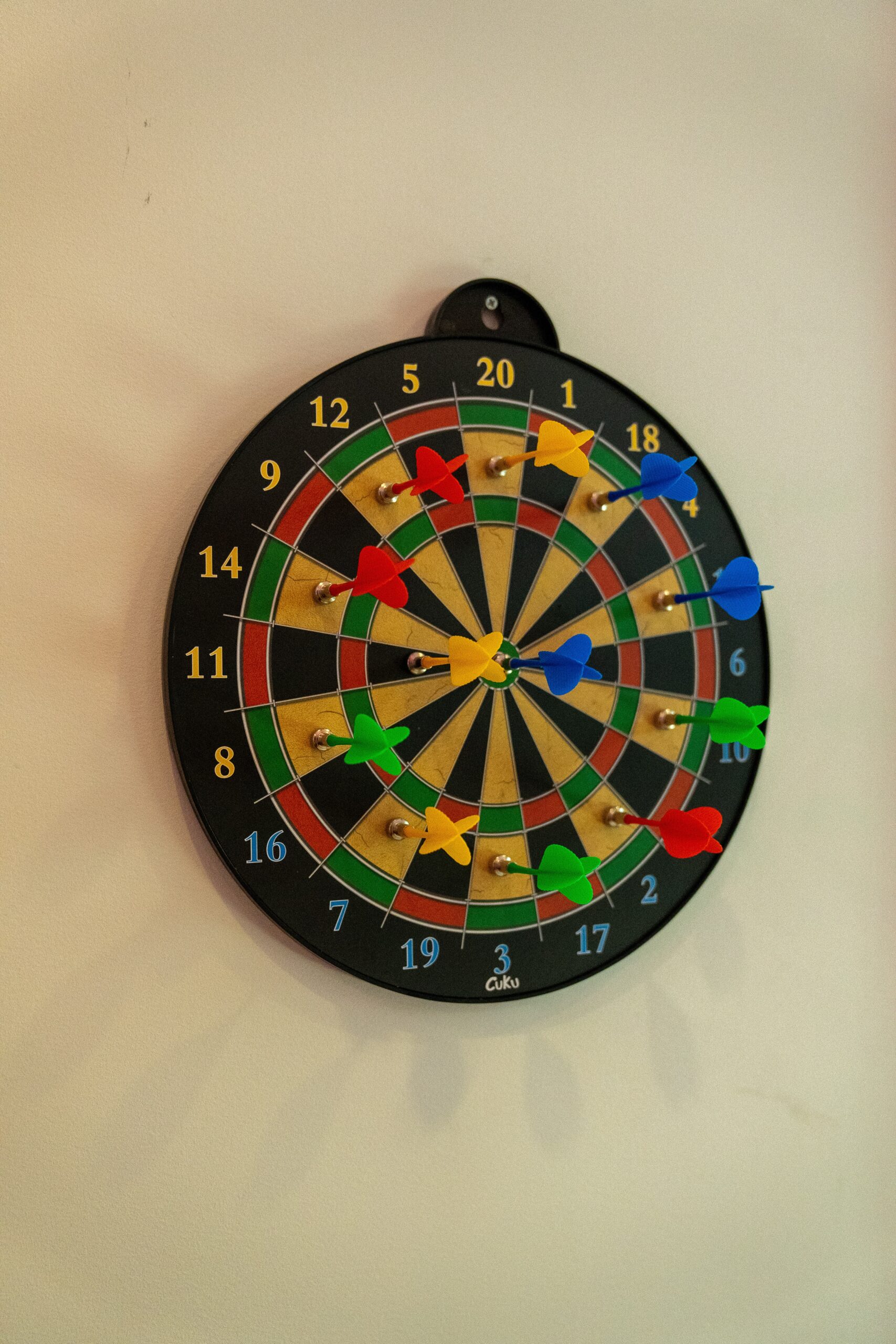Are you in the search of best place to buy dartboard cabinets? If yes then this Article is for you. A dartboard is a target for the game of darts, in the same manner as the stout bullseye aim is used in archery. It is supposed that the combatants during the Middle Ages would take turns hurling short spikes at upturned barrels or round targets formed from a tree's cross-section area. This spontaneous game was later started as a sport for indoor use by making small darts and a consistent wooden board.
Origin and History of Dartboard Game:
Darts is not only a viable international sport but also an enormously prevalent game for both home and social avenues.
Modern darts as we now know the game appeared in 1869 and Lancashire carpenter Brian Gamlin was the man who devised dart in the form we play it now. Nonetheless, initiated as a military amusement, the game was present in substitute forms much earlier, so the answer to ‘when was darts originated’ truly lies in the 1300s, during the English medieval epoch.
In this era, we have two deviations of the game that are played, pitting soft tip vs steel tip darts, with the difference between soft and steel tip darts coming primarily from the darts gear obligatory. Soft-tip darts use a plastic, electronic dartboard with many holes in which to plant special soft-tipped darts. This arrangement of the game is safer, and child-friendly and is also expected to cause comparatively less harm to property from unruly throws!
What is a Dartboard?
A classic and old-style dart board used with sharp steel-tipped darts can be fashioned from softwood, cork, or even trampled paper. Whereas the board used in contemporary electronic dart games is frequently built from a plastic material pricked with holes. Soft-tipped darts are used to protect them from mutilation. Also, the material used in a dart board hardly disturbs playing strategy, but some darts may not penetrate a wooden board as easily as in a cork one.
Standard Dimensions of a Dartboard:
The normal diameter of a tournament dart board is 15.5 inches (39.4cm). Official dart rules call for the center of the bullseye to be placed 5 feet 8 inches (173cm) from the ground, and 7 feet 9 1/2 inches (237cm) from the player. This is not the area calculated from the wall but from the face of the board. The area around the board should offer some shield from errant delinquent throws. Professional dart venues frequently install a wooden plank called an 'oche' exactly over the boundary line for throwers. The oche averts feet and other body parts from crossing into the restricted territory.
A customary dart board exhibits the numbers 1-20 positioned around the perimeter area in the following organization:
(top) 20 - 1 - 18 - 4 - 13 - 6 - 10 - 15 - 2 - 17 - 3 - 19 - 7 - 16 - 8 - 11 - 14 - 9 - 12 – 5
Close to none fairly know why this specific order was chosen in the first place, but some mathematicians hypothesize that the circulation is 'flat', meaning it is arbitrary enough to avert any point-rich regions. But still, there are some prepositions about this arrangement, which include that the layout of the numbers on the dartboard alters from high value to low value targets. The highest value targets are bounded by the lowest value. This is for the sake of promoting correctness in the shooting, that is, the penalty for going for the high scores is well-adjusted by missing to get a mediocre low score.
Materials Used in the Manufacturing of Dartboard - Buy dartboard cabinets:
In this contemporary and modern world, there are numerous materials accessible with which modern dartboard can be made including sisal fibers, cork, and paper. The material used in manufacturing the dart board will ultimately govern the excellence of the game. Paper and cork dartboards are much less appropriate to endure tedious practices without taxing away too quickly, unlike the superior dartboard range which uses sisal fibers – the most durable material for a long-lasting dartboard.
For those speculating how dartboards are made, long sisal fibers (extracted from the Agave plant) are gathered in tube-like bundles which are then cut into thin dartboard-width discs. A sum of these discs is then pressed together, protected to a circular backboard, and sanded down for a flat finish. The chief ink design and metal framework can then be transferred to the surface to complete the board.
How to Choose a Dartboard?
When you buy dartboard cabinets for the first time there are a small number of things you need to contemplate about. The most important among them are, where you plan to play, how much room you have accessible and your budget for new darts equipment will all help you in defining which dartboard you should add to the corner of your game. Reckoning out how earnestly you take or plan to take, the game before selecting the class of dartboard to buy is also significant.
Read more: How to Hang a Dartboard Cabinet?
Conclusion:
The dartboard, the throwing area, and lighting are all important factors. They also vary between different darts styles. Both our learner and professional dartboards are heavy-duty and premeditated to last, and both have a classic and traditional design and look. Through our continuous research and development, quality assurance, and with the help of our dedicated and expert professional team, we have vowed to meet and exceed our customer’s needs. We are obvious of one thing for sure, nobody has more experience in designing and manufacturing dartboards. We, the team at SZX billiards are by far the leading manufacturer of dartboards in the games market because we try our level best to deliver the optimal quality products.



